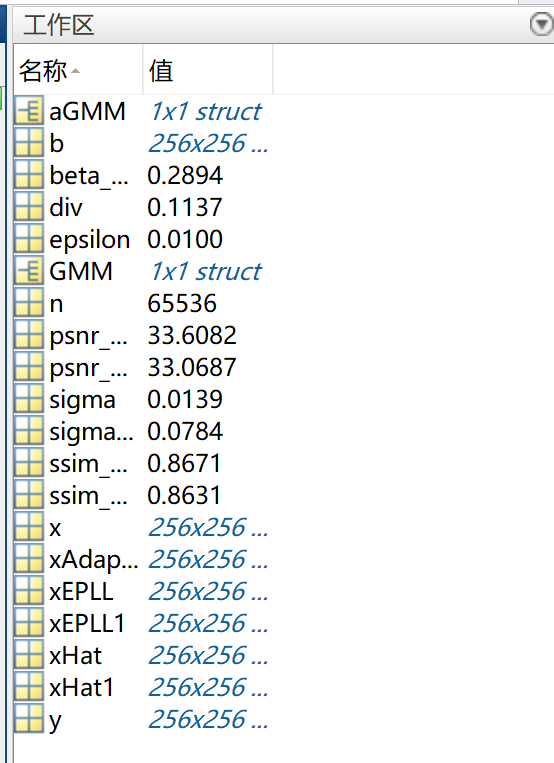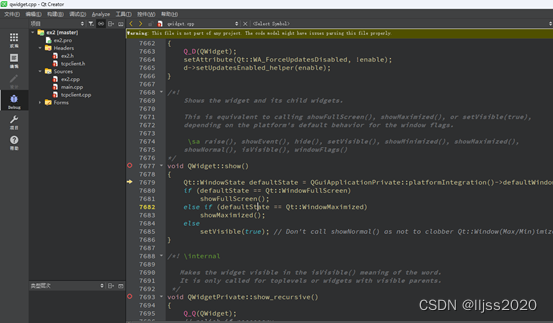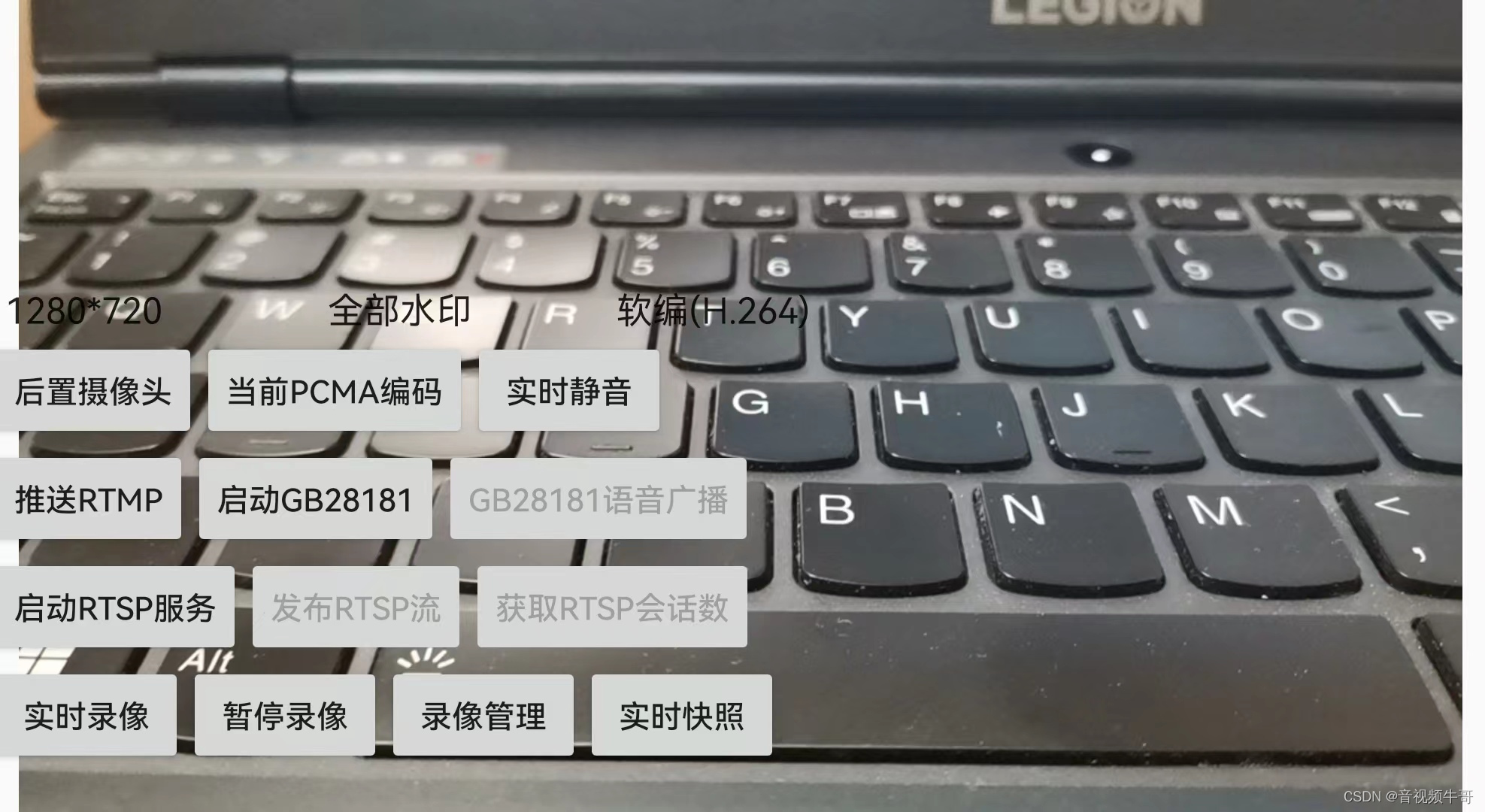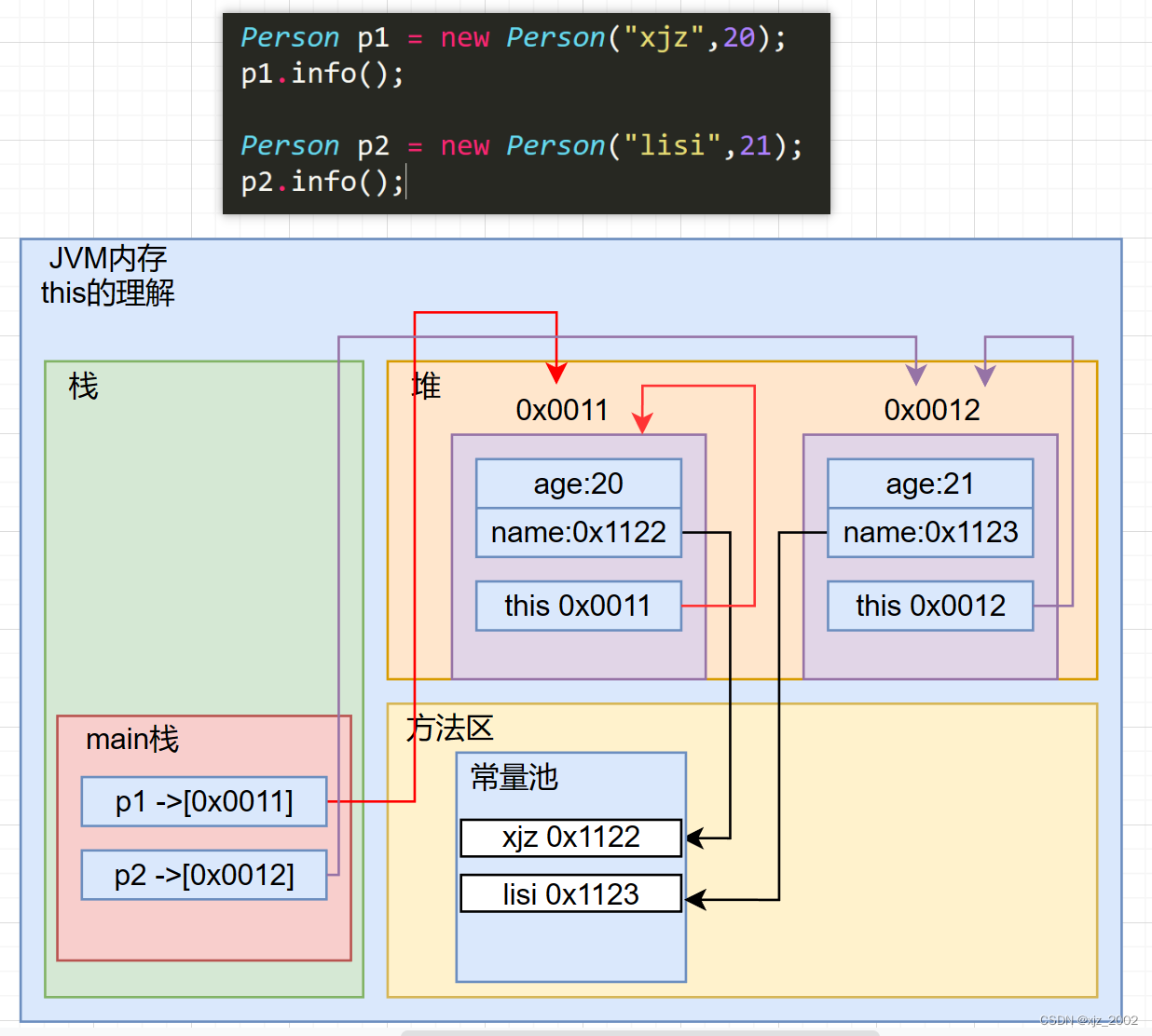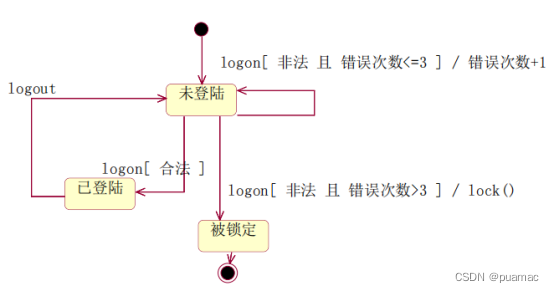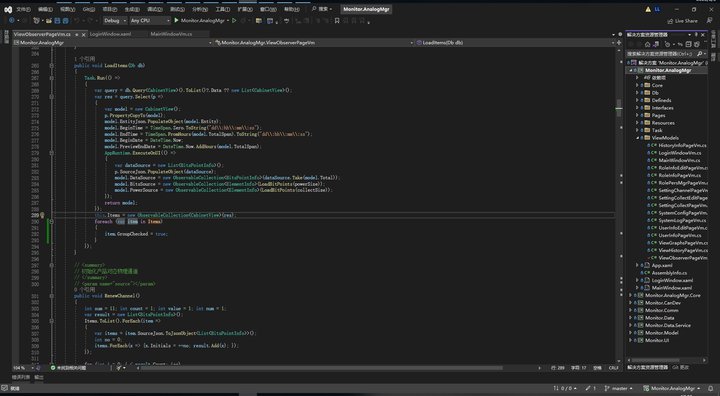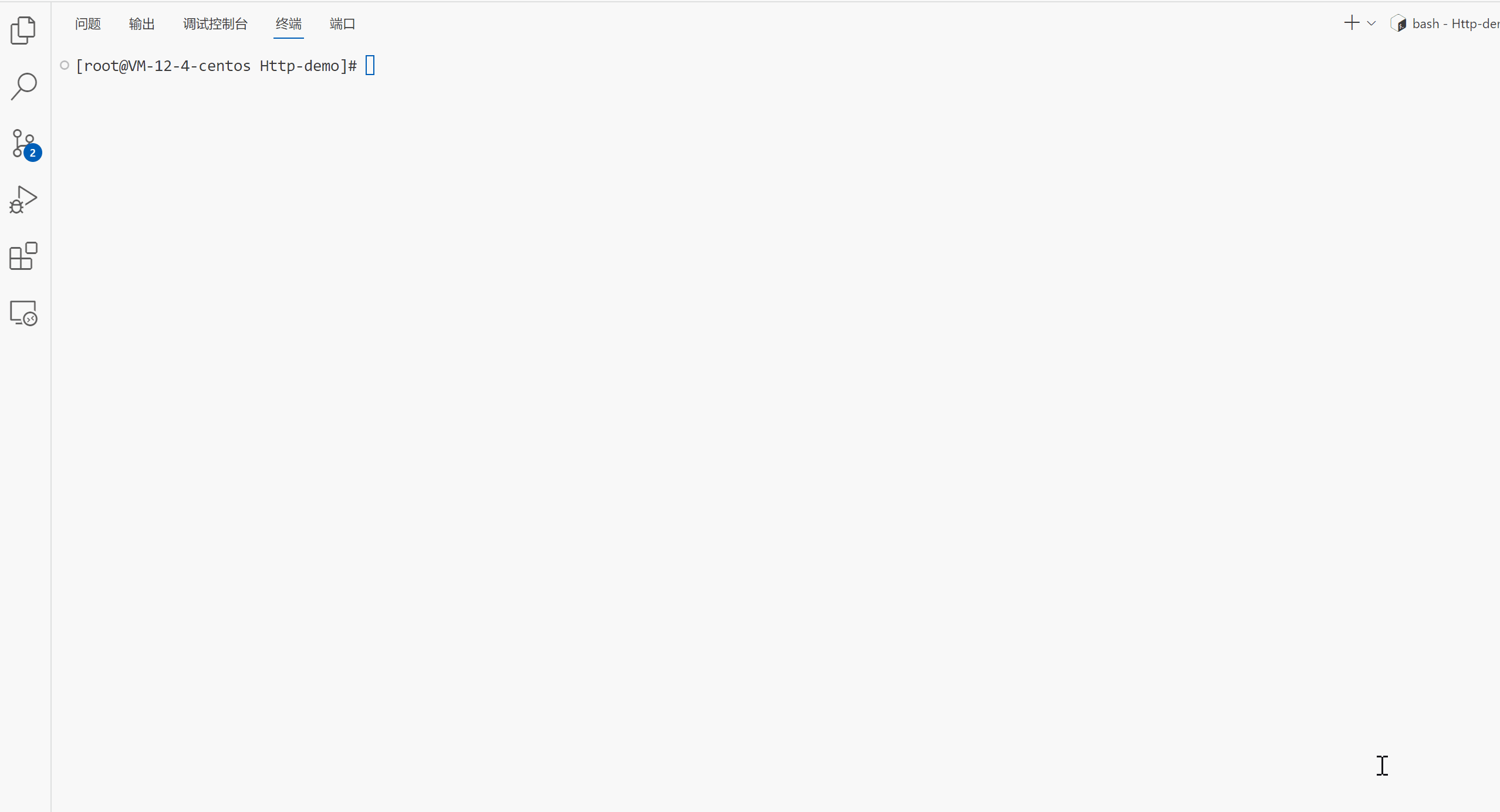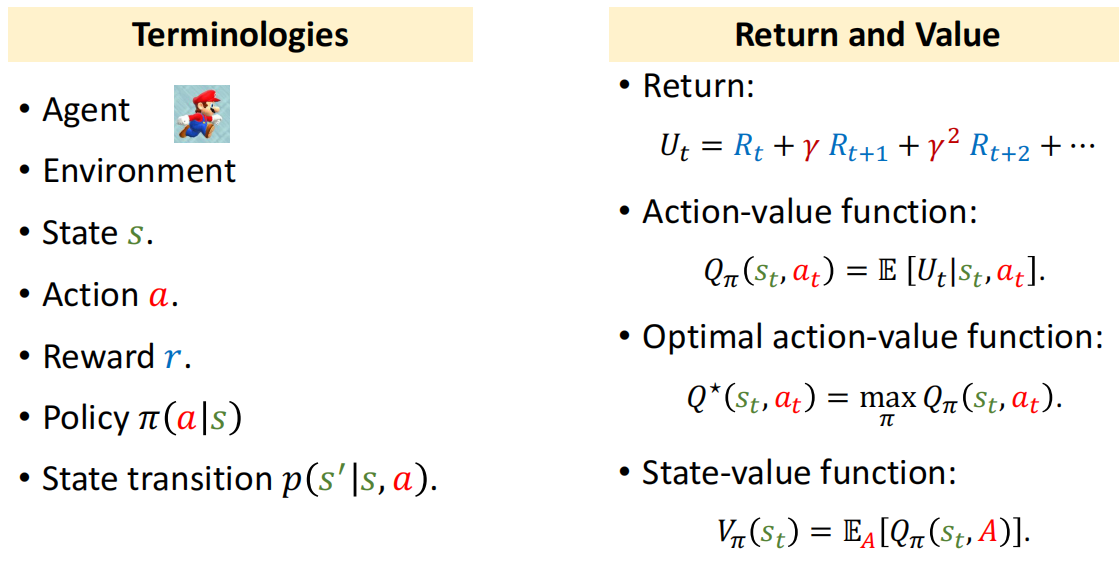SPI 全称 Service Provider Interface,是 Java 提供的,旨在由第三方实现或扩展的 API,它是一种用于动态加载服务的机制。Java 中 SPI 机制主要思想是将装配的控制权移到程序之外,在模块化设计中这个机制尤其重要,其核心思想就是解耦。
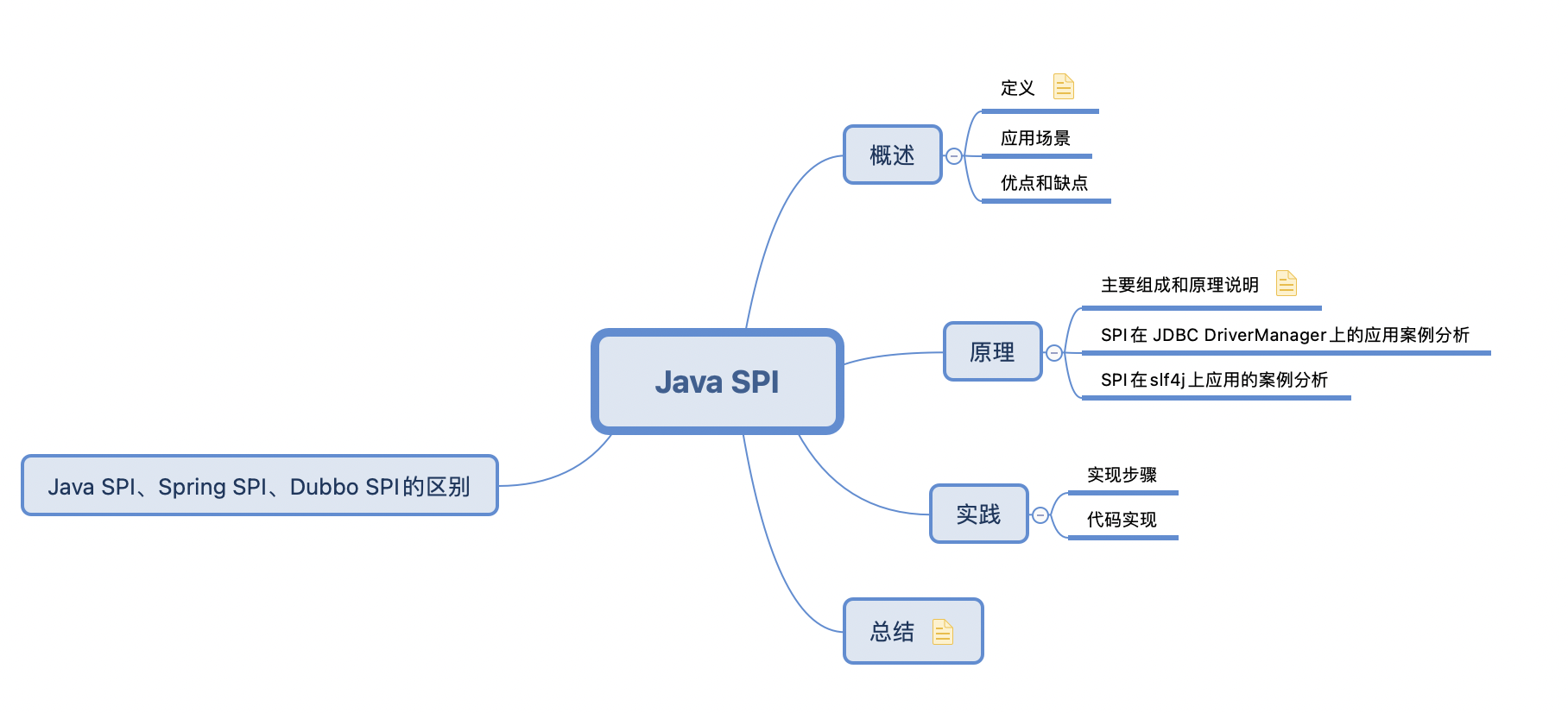
一、概述
Java SPI是SPI的一种重要实现方式,是JDK内置的一种服务发现方法,实现逻辑是:调用方通过调用JDK提供的标准化的服务接口,通过本地服务发现,加载第三方或者本地实现了该接口的类,通过这种方式,服务规范制定者制定接口规范,服务提供者按照接口进行实现。在JDK中实现数据库驱动按需加载就是利用SPI的方式实现的,JDK规定了java.sql.Driver接口,其具体实现可以是MySQL或者PostgreSQL,具体实现是第三方的驱动服务方提供,通过SPI机制加载供调用方使用。

1.应用场景
SPI机制应用在服务的规范制定者和服务的实现者需要分离的情况,就是接口中方法的规定和实现是分离的,这种机制经常在可选组件和可选插件的场景中使用,通过SPI的机制将具体的实现加载进来。具体的应用在 Java 的 java.util.spi package 中就约定了很多 SPI 接口。下面,列举一些 SPI 接口:
- TimeZoneNameProvider: 为 TimeZone 类提供本地化的时区名称。
- DateFormatProvider: 为指定的语言环境提供日期和时间格式。
- NumberFormatProvider: 为 NumberFormat 类提供货币、整数和百分比值。
- Driver: 从 4.0 版开始,JDBC API 支持 SPI 模式。旧版本使用 Class.forName() 方法加载驱动程序。
- PersistenceProvider: 提供 JPA API 的实现。
2.优点和缺点
优点:
SPI机制的优点是灵活性高,可以通过简单地添加或替换实现类来扩展应用程序的功能。同时,SPI机制也具有一定的可扩展性和可维护性,因为它将应用程序和具体实现解耦,实现了高内聚、低耦合的目标。
缺点:
SPI机制的缺点是需要程序员手动编写实现类并在META-INF/services目录下创建配置文件,这样会增加代码量和工作量。同时,SPI机制也存在安全风险,因为实现类是由外部提供的,可能存在恶意实现类的风险。
二、原理
1.主要组成和原理说明
要通过SPI实现动态服务发现,首先需要了解其主要的组成部分:
- **SPI 接口:**为服务提供者实现类约定的的接口或抽象类。
- **SPI 实现类:**实际提供服务的实现类。
- **SPI 配置:**Java SPI 机制约定的配置文件,提供查找服务实现类的逻辑。配置文件必须置于 META-INF/services 目录中,并且,文件名应与服务提供者接口的完全限定名保持一致。文件中的每一行都有一个实现服务类的详细信息,同样是服务提供者类的完全限定名称。
- **ServiceLoader:**Java SPI 的核心类,用于加载 SPI 实现类。ServiceLoader 中有各种实用方法来获取特定实现、迭代它们或重新加载服务。
SPI原理说明
实现SPI的动态加载实现类主要是通过ServiceLoader类来实现。首先调用方通过ServiceLoader.load ()静态方法来加载SPI服务,ServiceLoader的成员变量中保存了实现类配置文件位置前缀、实现类信息、实现类ClassLoader信息、实现类实例信息等。
//实现类配置文件位置前缀
private static final String PREFIX = "META-INF/services/";
// The class or interface representing the service being loaded
private final Class<S> service;
// The class loader used to locate, load, and instantiate providers
private final ClassLoader loader;
// The access control context taken when the ServiceLoader is created
private final AccessControlContext acc;
// Cached providers, in instantiation order
private LinkedHashMap<String,S> providers = new LinkedHashMap<>();
// The current lazy-lookup iterator
private LazyIterator lookupIterator;
ServiceLoader.load ()方法中调用构造方法ServiceLoader(),构造方法中调用reload() 方法,通过lookupIterator = new LazyIterator(service, loader);来初始化懒加载的迭代器,查看其next()方法,其核心就是从META-INF/services/ 目录中读取文件,将其转换为Class类对象加载进来。最后Class类对象通过newInstance()方法实例化,这样就根据SPI中的接口信息加载了实现类。
//ServiceLoader.java
//静态方法load()
public static <S> ServiceLoader<S> load(Class<S> service) {
ClassLoader cl = Thread.currentThread().getContextClassLoader();
return ServiceLoader.load(service, cl);
}
//将实现类的全限定类名转换为完整路径
private boolean hasNextService() {
if (nextName != null) {
return true;
}
if (configs == null) {
try {
String fullName = PREFIX + service.getName();
if (loader == null)
configs = ClassLoader.getSystemResources(fullName);
else
configs = loader.getResources(fullName);
} catch (IOException x) {
fail(service, "Error locating configuration files", x);
}
}
while ((pending == null) || !pending.hasNext()) {
if (!configs.hasMoreElements()) {
return false;
}
pending = parse(service, configs.nextElement());
}
nextName = pending.next();
return true;
}
//Class.java
//根据类对象信息生成对象实例
public T newInstance()
throws InstantiationException, IllegalAccessException
{
if (System.getSecurityManager() != null) {
checkMemberAccess(Member.PUBLIC, Reflection.getCallerClass(), false);
}
// NOTE: the following code may not be strictly correct under
// the current Java memory model.
// Constructor lookup
if (cachedConstructor == null) {
if (this == Class.class) {
throw new IllegalAccessException(
"Can not call newInstance() on the Class for java.lang.Class"
);
}
try {
Class<?>[] empty = {};
final Constructor<T> c = getConstructor0(empty, Member.DECLARED);
// Disable accessibility checks on the constructor
// since we have to do the security check here anyway
// (the stack depth is wrong for the Constructor's
// security check to work)
java.security.AccessController.doPrivileged(
new java.security.PrivilegedAction<Void>() {
public Void run() {
c.setAccessible(true);
return null;
}
});
cachedConstructor = c;
} catch (NoSuchMethodException e) {
throw (InstantiationException)
new InstantiationException(getName()).initCause(e);
}
}
Constructor<T> tmpConstructor = cachedConstructor;
// Security check (same as in java.lang.reflect.Constructor)
int modifiers = tmpConstructor.getModifiers();
if (!Reflection.quickCheckMemberAccess(this, modifiers)) {
Class<?> caller = Reflection.getCallerClass();
if (newInstanceCallerCache != caller) {
Reflection.ensureMemberAccess(caller, this, null, modifiers);
newInstanceCallerCache = caller;
}
}
// Run constructor
try {
return tmpConstructor.newInstance((Object[])null);
} catch (InvocationTargetException e) {
Unsafe.getUnsafe().throwException(e.getTargetException());
// Not reached
return null;
}
}
在代码阅读过程中,有点需要注意,在调用ServiceLoader.load ()方法时,会进行一次重载调用,会多传入了一个新的ClassLoader,这个ClassLoader是ApplicationClassLoader,他的作用是加载目前运行中应用的类对象,需要这样做的原因是JDK的双亲委派机制决定的,即加载ServiceLoader类的ClassLoader是BootstrapClassLoader,所以默认情况通过他去创建的对象也是BootstrapClassLoader,但通过SPI机制需要加载的实现类都在classpath中,无法被加载,所以通过Thread.currentThread().getContextClassLoader();这个方法来获取ApplicationClassLoader。
//ServiceLoader.java
public static <S> ServiceLoader<S> load(Class<S> service) {
ClassLoader cl = Thread.currentThread().getContextClassLoader();
return ServiceLoader.load(service, cl);
}
//Thread.java
public ClassLoader getContextClassLoader() {
if (contextClassLoader == null)
return null;
SecurityManager sm = System.getSecurityManager();
if (sm != null) {
ClassLoader.checkClassLoaderPermission(contextClassLoader,
Reflection.getCallerClass());
}
return contextClassLoader;
}
2.SPI在 JDBC DriverManager上的应用案例分析
在JDBC4.0之前,我们开发有连接数据库的时候,通常会用Class.forName(“com.mysql.jdbc.Driver”)这句先加载数据库相关的驱动,然后再进行获取连接等的操作。而JDBC4.0之后不需要用Class.forName(“com.mysql.jdbc.Driver”)来加载驱动,直接获取连接就可以了,现在这种方式就是使用了Java的SPI扩展机制来实现。
具体的使用方法是:
- JDBC接口定义:首先在java中定义了接口
java.sql.Driver,并没有具体的实现,具体的实现都是由不同厂商来提供的。 - MySQL实现:在mysql的jar包
mysql-connector-java-6.0.6.jar中,可以找到META-INF/services目录,该目录下会有一个名字为java.sql.Driver的文件,文件内容是com.mysql.cj.jdbc.Driver,这里面的内容就是针对Java中定义的接口的实现。 - 服务使用:通过以下方法就能直接使用
String url = "jdbc:xxxx://xxxx:xxxx/xxxx";
Connection conn = DriverManager.getConnection(url,username,password);
原理分析
DriverManager.getConnection(url,username,password);执行的代码逻辑。
//DriverManager.java
//通过用户名密码等信息获取连接
public static Connection getConnection(String url,
String user, String password) throws SQLException {
java.util.Properties info = new java.util.Properties();
if (user != null) {
info.put("user", user);
}
if (password != null) {
info.put("password", password);
}
return (getConnection(url, info, Reflection.getCallerClass()));
}
//通过实例化后的驱动连接数据库
private static Connection getConnection(
String url, java.util.Properties info, Class<?> caller) throws SQLException {
/*
* When callerCl is null, we should check the application's
* (which is invoking this class indirectly)
* classloader, so that the JDBC driver class outside rt.jar
* can be loaded from here.
*/
ClassLoader callerCL = caller != null ? caller.getClassLoader() : null;
synchronized(DriverManager.class) {
// synchronize loading of the correct classloader.
if (callerCL == null) {
callerCL = Thread.currentThread().getContextClassLoader();
}
}
if(url == null) {
throw new SQLException("The url cannot be null", "08001");
}
println("DriverManager.getConnection(\"" + url + "\")");
// Walk through the loaded registeredDrivers attempting to make a connection.
// Remember the first exception that gets raised so we can reraise it.
SQLException reason = null;
for(DriverInfo aDriver : registeredDrivers) {
// If the caller does not have permission to load the driver then
// skip it.
if(isDriverAllowed(aDriver.driver, callerCL)) {
try {
println(" trying " + aDriver.driver.getClass().getName());
Connection con = aDriver.driver.connect(url, info);
if (con != null) {
// Success!
println("getConnection returning " + aDriver.driver.getClass().getName());
return (con);
}
} catch (SQLException ex) {
if (reason == null) {
reason = ex;
}
}
} else {
println(" skipping: " + aDriver.getClass().getName());
}
}
// if we got here nobody could connect.
if (reason != null) {
println("getConnection failed: " + reason);
throw reason;
}
println("getConnection: no suitable driver found for "+ url);
throw new SQLException("No suitable driver found for "+ url, "08001");
}
DriverManager.java的静态代码段执行loadInitialDrivers();方法,该方法的主要逻辑为:
- 从系统变量中获取有关驱动的定义。
- 使用SPI来获取驱动的实现。
- 遍历使用SPI获取到的具体实现,实例化各个实现类。
- 根据第一步获取到的驱动列表来实例化具体实现类。
//DriverManager.java
//静态代码段
static {
loadInitialDrivers();
println("JDBC DriverManager initialized");
}
//根据配置信息加载对于的数据库驱动
private static void loadInitialDrivers() {
String drivers;
try {
drivers = AccessController.doPrivileged(new PrivilegedAction<String>() {
public String run() {
return System.getProperty("jdbc.drivers");
}
});
} catch (Exception ex) {
drivers = null;
}
// If the driver is packaged as a Service Provider, load it.
// Get all the drivers through the classloader
// exposed as a java.sql.Driver.class service.
// ServiceLoader.load() replaces the sun.misc.Providers()
AccessController.doPrivileged(new PrivilegedAction<Void>() {
public Void run() {
ServiceLoader<Driver> loadedDrivers = ServiceLoader.load(Driver.class);
Iterator<Driver> driversIterator = loadedDrivers.iterator();
/* Load these drivers, so that they can be instantiated.
* It may be the case that the driver class may not be there
* i.e. there may be a packaged driver with the service class
* as implementation of java.sql.Driver but the actual class
* may be missing. In that case a java.util.ServiceConfigurationError
* will be thrown at runtime by the VM trying to locate
* and load the service.
*
* Adding a try catch block to catch those runtime errors
* if driver not available in classpath but it's
* packaged as service and that service is there in classpath.
*/
try{
while(driversIterator.hasNext()) {
driversIterator.next();
}
} catch(Throwable t) {
// Do nothing
}
return null;
}
});
println("DriverManager.initialize: jdbc.drivers = " + drivers);
if (drivers == null || drivers.equals("")) {
return;
}
String[] driversList = drivers.split(":");
println("number of Drivers:" + driversList.length);
for (String aDriver : driversList) {
try {
println("DriverManager.Initialize: loading " + aDriver);
Class.forName(aDriver, true,
ClassLoader.getSystemClassLoader());
} catch (Exception ex) {
println("DriverManager.Initialize: load failed: " + ex);
}
}
}
通过以上方式,就能把实现Driver接口的驱动实现类加载进来了。
SPI在slf4j上应用的案例分析
todo
三、实践
1.实现步骤
- 定义接口:定义一个接口,声明一些抽象方法。
- 创建实现类:创建一个或多个实现该接口的类。
- 配置文件:在META-INF/services/目录下创建一个以接口全限定名为命名的文件,内容为实现类的全限定名,每行一个。
- 加载配置:使用ServiceLoader类加载配置文件并解析出实现类。
2.代码实现
实现通过SPI加载不同数据库实现方式的功能,数据库的实现方式包括Mysql和redis。
(1)实现接口
public interface DataStorage {
String search(String key);
}
(2)创建实现类
创建2个实现类,分别是Mysql和redis的实现方式。
public class MysqlStorage implements DataStorage{
@Override
public String search(String key) {
return "【Mysql】搜索" + key + ",结果:No";
}
}
public class RedisStorage implements DataStorage{
@Override
public String search(String key) {
return "【Redis】搜索" + key + ",结果:Yes";
}
}
(3)配置文件
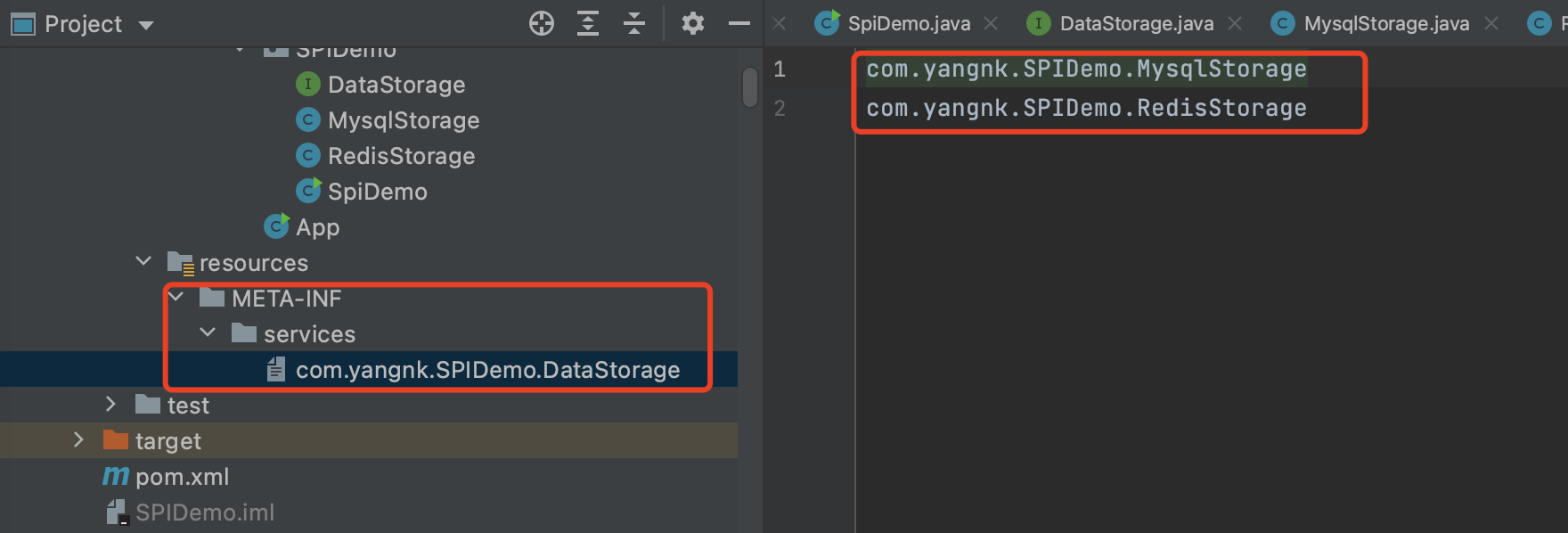
(4)加载配置
打印出通过SPI加载到的数据库驱动。
import java.util.ServiceLoader;
public class SpiDemo {
public static void main(String[] args) {
ServiceLoader<DataStorage> serviceLoader = ServiceLoader.load(DataStorage.class);
System.out.println("============ Java SPI 测试============");
serviceLoader.forEach(loader -> System.out.println(loader.search("Yes Or No")));
}
}
(5)验证效果
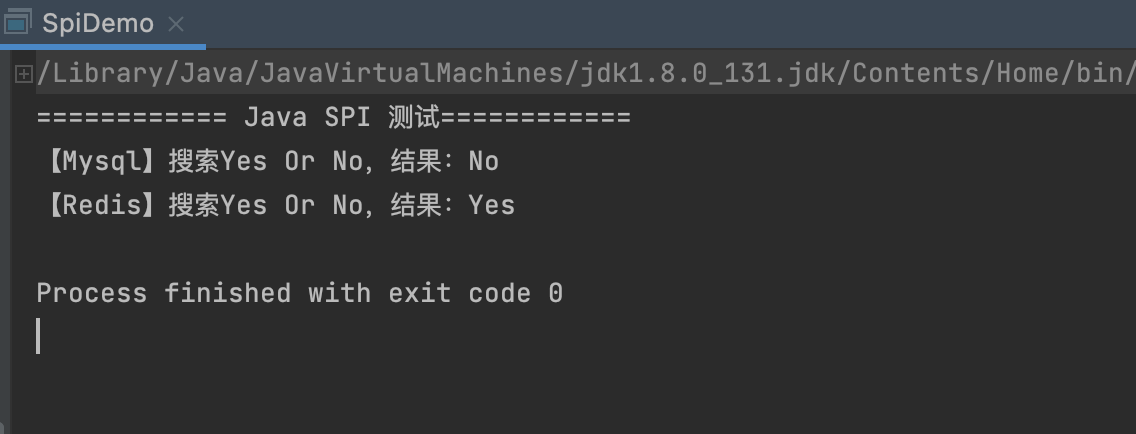
四、总结
(1)SPI的核心思路是什么?
SPI源码的代码逻辑还是比较复杂,但是核心的思路就是通过ApplicationClassloader加载到配置好的实现类,获取ApplicationClassloader的方法是getContextClassLoader()方法,配置类信息记录在约定好的META-INF/services/目录中。
(2)SPI模式和API模式的区别?
两种模式都区分服务提供者和服务调用者的,API的服务实现放在服务提供者方那边,和接口一起提供;SPI的服务实现可以第三方实现或者自己实现,和接口是分开的。
TODO
- 补充SPI在slf4j上应用的案例分析;
- 增加Java、Spring、Dubbo三者SPI机制区别的总结;
参考资料
- 鲜为人知的Java SPI机制:https://juejin.cn/post/7224756843713036345#heading-3
- Java常用机制 - SPI机制详解:https://www.pdai.tech/md/java/advanced/java-advanced-spi.html
- 源码级深度理解 Java SPI:https://zhuanlan.zhihu.com/p/580004065?utm_medium=social&utm_oi=26977696219136&utm_psn=1573735461662785536&utm_source=wechat_session
- 阿里一面:说一说Java、Spring、Dubbo三者SPI机制的原理和区别:https://juejin.cn/post/7210601680554246202
本文由博客一文多发平台 OpenWrite 发布!
